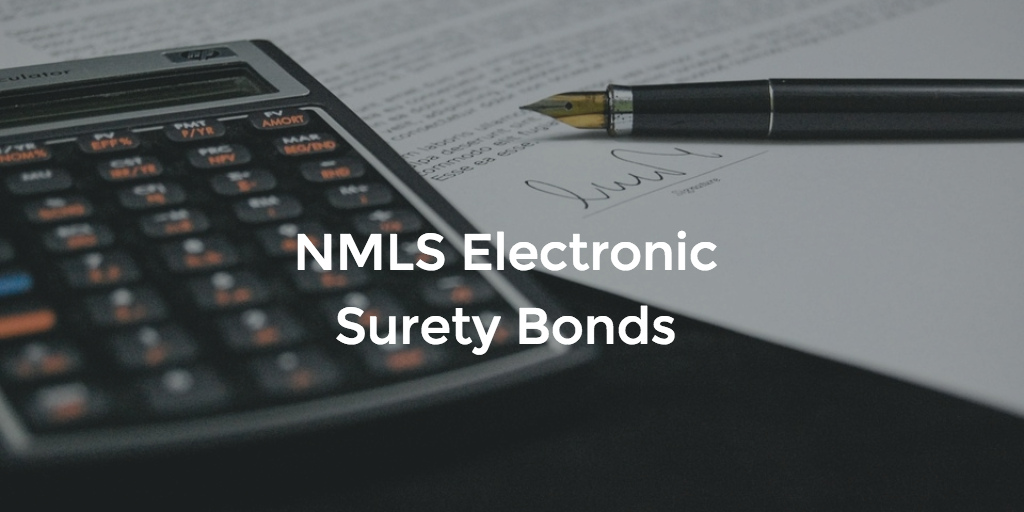A number of professionals in the financial field across the U.S. undergo their required licensing procedure via the National Multistate Licensing System and Registry (NMLS). As the NMLS is introducing a new system for submitting and managing surety bond requirements, it’s important for businesses to get acquainted with the electronic surety bond (ESB).
The new method for collecting and storing surety bonds is effective for licensees as of September 12, 2016. The first phase was rolled out in January 2016 and affected surety bond producers and surety companies.
By using electronic surety bonds, the NMLS aims to make the licensing and bonding process smoother for all parties involved. The new system allows for online submission of required bonds by licensees and their surety providers, plus electronic bond issuance and monitoring for relevant authorities.
Let’s look at the basics of the new ESB system and the changes that licensees should be aware of.
The rationale for electronic surety bonds
The NMLS manages the licensing procedure for a number of professions across the country. In many cases, state authorities ask licensees to obtain surety bonds in order to be granted the right to operate. As of 2014, 177 licensing bodies required bonding.
The new electronic system for submission and management of NMLS surety bonds aims to speed up the process for licensees, surety underwriters, and state authorities alike. By being able to submit and track all bonding online, all parties would have easier access and better information.
The NMLS also seeks to serve as a complete database for all licensing information, so electronic management of surety bonds is a step in this direction.
States and industries affected by the change
Until now, nine states have moved to the ESB system, including Texas, Washington, Idaho, Wyoming, Iowa, Wisconsin, Vermont, Massachusetts and Indiana. While the idea is to convert all states, it is not yet clear whether and when this would be realized.
In Idaho, collection agencies need to start using the new system by March 15, 2017. Debt management companies, exempt companies, first lien mortgage lenders, money transmitters, and subordinate lien mortgage lenders in Indiana have to comply with the changes by the end of 2016. The same deadline applies for closing agents, debt management companies, exempt companies, money servicers, mortgage bankers, and mortgage brokers in Iowa.
In Massachusetts, check sellers, debt collectors, and foreign transmittal agencies have to convert to ESB by December 15, 2016. Mortgage brokers, mortgage lenders and exempt companies have to comply by the end of 2016. All new licensees had to meet the NMLS surety bond requirements via the electronic system as of September 12.
Money transmitters in Texas do not have an obligation to use ESBs, but are encouraged to do so.
In Vermont, debt adjusters, money transmitters, and litigation funding companies need to adopt the new system by November 1, 2016. Lenders, loan servicers, and mortgage brokers have to move to ESBs by June 30, 2017. All types of new licensees have started using the online system as of September 12.
Mortgage brokers in Washington will need to adopt ESBs by the end of 2017. As for mortgage brokers and mortgage bankers in Wisconsin, the deadline is September 1, 2017. Finally, in Wyoming, by June 30, 2017, all exempt companies, money transmitters, mortgage brokers, and mortgage lenders will have to use ESBs.
What’s changing for you as a licensee
While the NMLS surety bond requirements are not changing, complying with licensing rules for certain licensees in the above-mentioned states and license types will happen by using ESBs.
In essence, this means the next time you obtain or renew your surety bond you will have to submit it online via the NMLS website. Surety bonds on paper will not be accepted, so you won’t need to print your bond and send it to the state authority via post. Instead, bonds will be uploaded to the online NMLS system, where all involved parties would be able to track deadlines and monitor compliance.
What are your thoughts on NMLS’s electronic surety bonds? Do you think they are going to make the bonding process easier? Please share your thoughts in the comments below.
Vic Lance is the founder and president of Lance Surety Bond Associates, Inc.



 California Jury Awards $40 Million in Johnson & Johnson Talc Cancer Lawsuit
California Jury Awards $40 Million in Johnson & Johnson Talc Cancer Lawsuit  Bolivia’s Ex-President Luis Arce Detained in Embezzlement Probe
Bolivia’s Ex-President Luis Arce Detained in Embezzlement Probe  International Outcry Grows Over Re-Arrest of Nobel Laureate Narges Mohammadi in Iran
International Outcry Grows Over Re-Arrest of Nobel Laureate Narges Mohammadi in Iran  Trump Claims Pardon for Tina Peters Despite No Legal Authority
Trump Claims Pardon for Tina Peters Despite No Legal Authority  Trump Sues BBC for Defamation Over Edited Capitol Riot Speech Clip
Trump Sues BBC for Defamation Over Edited Capitol Riot Speech Clip  Federal Judge Blocks Trump Administration’s Pause on New Wind-Energy Permits
Federal Judge Blocks Trump Administration’s Pause on New Wind-Energy Permits  Tunisia Protests Grow as Opposition Unites Against President Kais Saied’s Rule
Tunisia Protests Grow as Opposition Unites Against President Kais Saied’s Rule  Federal Judge Declines to Immediately Halt Trump’s $300 Million White House Ballroom Project
Federal Judge Declines to Immediately Halt Trump’s $300 Million White House Ballroom Project  New Epstein Photos Surface Showing Trump as Lawmakers Near Document Release Deadline
New Epstein Photos Surface Showing Trump as Lawmakers Near Document Release Deadline  Bolsonaro’s Defense Requests Hospital Transfer and Humanitarian House Arrest
Bolsonaro’s Defense Requests Hospital Transfer and Humanitarian House Arrest  Preservation Group Sues Trump Administration to Halt $300 Million White House Ballroom Project
Preservation Group Sues Trump Administration to Halt $300 Million White House Ballroom Project  US Charges Two Men in Alleged Nvidia Chip Smuggling Scheme to China
US Charges Two Men in Alleged Nvidia Chip Smuggling Scheme to China  Jimmy Lai Convicted Under Hong Kong National Security Law in Landmark Case
Jimmy Lai Convicted Under Hong Kong National Security Law in Landmark Case  ANZ Faces Legal Battle as Former CEO Shayne Elliott Sues Over A$13.5 Million Bonus Dispute
ANZ Faces Legal Battle as Former CEO Shayne Elliott Sues Over A$13.5 Million Bonus Dispute  Supporters Gather Ahead of Verdict in Jimmy Lai’s Landmark Hong Kong National Security Trial
Supporters Gather Ahead of Verdict in Jimmy Lai’s Landmark Hong Kong National Security Trial  California, 18 States Sue to Block Trump’s $100,000 H-1B Visa Fee
California, 18 States Sue to Block Trump’s $100,000 H-1B Visa Fee  U.S. Homeland Security Ends TSA Union Contract, Prompting Legal Challenge
U.S. Homeland Security Ends TSA Union Contract, Prompting Legal Challenge 
































